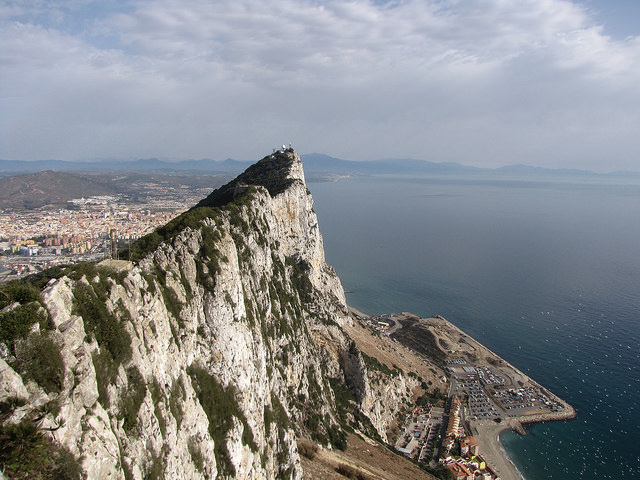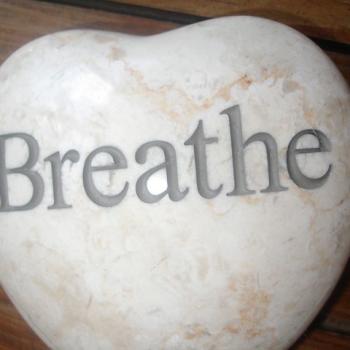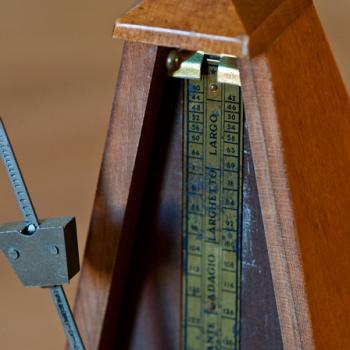
Holding Fast and Standing Firm
Many of us like to think leaders need to be nimble and quick on our feet these days. The people we think of as leaders appear to be flexible, adjusting to each new development.
We live in a time of increasingly rapid change and expect our leaders to be comfortable with it.
It is easy to assume leaders will be familiar with the latest technology and newest ideas. We may feel frustrated with leaders who are behind the times.
Leaders are supposed to be bringing us forward, creating and leading us into changes, right?
Many of us are looking for leaders who inspire us to go further, move faster, do more. Our understanding of making progress depends on finding ways to work harder. We expect a leader to spur us on to greater efforts and accomplishments.
It is as if we are athletes who want to work with a coach to find our peak performance. We assume leaders are here to help us break the existing records.
Some of the leaders who inspire me are standing firm trying to stop or divert change. They may be fighting against the forces of change or attempting to adjust their direction.
There are leaders who work to move the world in a new direction. Other leaders are committed to preserving existing values or ways of life. Some believe we need to change while others believe, just as strongly, we need to hold fast.
It can feel like the way we approach leadership reflects an ancient Chinese paradox. Some leaders see themselves as an unstoppable force, driving change forward. Others view their leadership as an immovable object, standing firm in the face of any force.
Leading in a Time of Constant Change
We live in a time when it is easy to believe constant change is here to stay. Some people even think change is the only constant.
How we relate to change is an essential aspect of how we lead. Some of us embrace change while some of us resist it. We may see our leadership as a force for bringing and encouraging change. Our leadership could also be a way to preserve aspects of the status quo in light of change.
How do we see ourselves? What sort of relationship do we want our leadership to have to changes in the world?
Innovation and change are powerful forces, but not all changes are for the better.
No one’s leadership, no matter how effective, will prevent the world from changing. While we may be creative and persuasive, we cannot force other people to change.
The challenge for us as leaders is to be open to change and find the wisdom in it.
We need to appreciate how other people respond to constant change. Some of us are invigorated by the prospects of it; some of us fear it. We may recognize and relate to each potential change in a different way.
Our responsibility as leaders is to help each other find and be our best selves. Some changes bring out the best in some people and not in others. We may be facing a change which is difficult for most of us.
There are changes which tend to make us feel resistant. It may have more to do with us than the specific ways we need to adapt. We may be tired or frustrated, confused or skeptical. Maybe we just do not feel like changing that day.
A Monastic Approach to Change
Monks respond to change in much the same ways as other people do. Some monks tend to embrace changes while others are more likely to be less enthusiastic.
It can be easy for people in monastic life to see themselves as standing firm to defend a principle. Like the rest of us, they believe they are taking principled positions.
We often see change as a matter of right and wrong, of fairness and unfairness. Most of us have a vested interest in the status quo. We want to believe we control our own destinies, we have a say in what happens to us.
People who put time and effort into reflecting and contemplation want to discern the truth. They believe in their own judgment, their own ability to see things clearly.
It can be a challenge when change seems to put what we have discerned for ourselves at risk.
We may like to see ourselves as standing firm and holding fast to our principles. The challenge of monastic life, as it is for leaders, is to be open to change.
It is tempting to allow ourselves to be pushed toward an extreme. We may be more comfortable being champions of change. It can appeal to us to see ourselves standing firm in defense of our principles. Are we able to live and lead at both extremes simultaneously?
Change and consistency are not dualistic, either/or choices. They are more like two halves of the same whole.
Standing Firm and Changing
Life is always changing all around us. We may believe we are standing still, standing firm, but we are riding the crest of the wave.
There is more to our lives than a struggle between moving forward and standing firm. Each one of us, no matter how we see ourselves, is making a difference in the world.
It is easy for us to get stuck in how we look at ourselves. We become caught up in the image we have of the world, in our metaphor of how life works.
All of life is changing and all of life is standing firm. Each of us finds our own balance, our own recipe.
The challenge for us is opening our eyes to the world around us. As we look we begin to see the possibilities of what might happen.
What is our relationship to change like today?
How can we be open to change as we are standing firm on principles this week?
[Image by dancing_triss]
Greg Richardson is a spiritual life mentor and leadership coach in Southern California. He is a recovering attorney and university professor, and a lay Oblate with New Camaldoli Hermitage near Big Sur, California. Greg’s website is StrategicMonk.com, and his email address is [email protected].












